From Landfill to Windfall
Ultra Capital is backing Fiberight, a high-tech recycling plant, proving that impact investing strategies are anything but garbage.
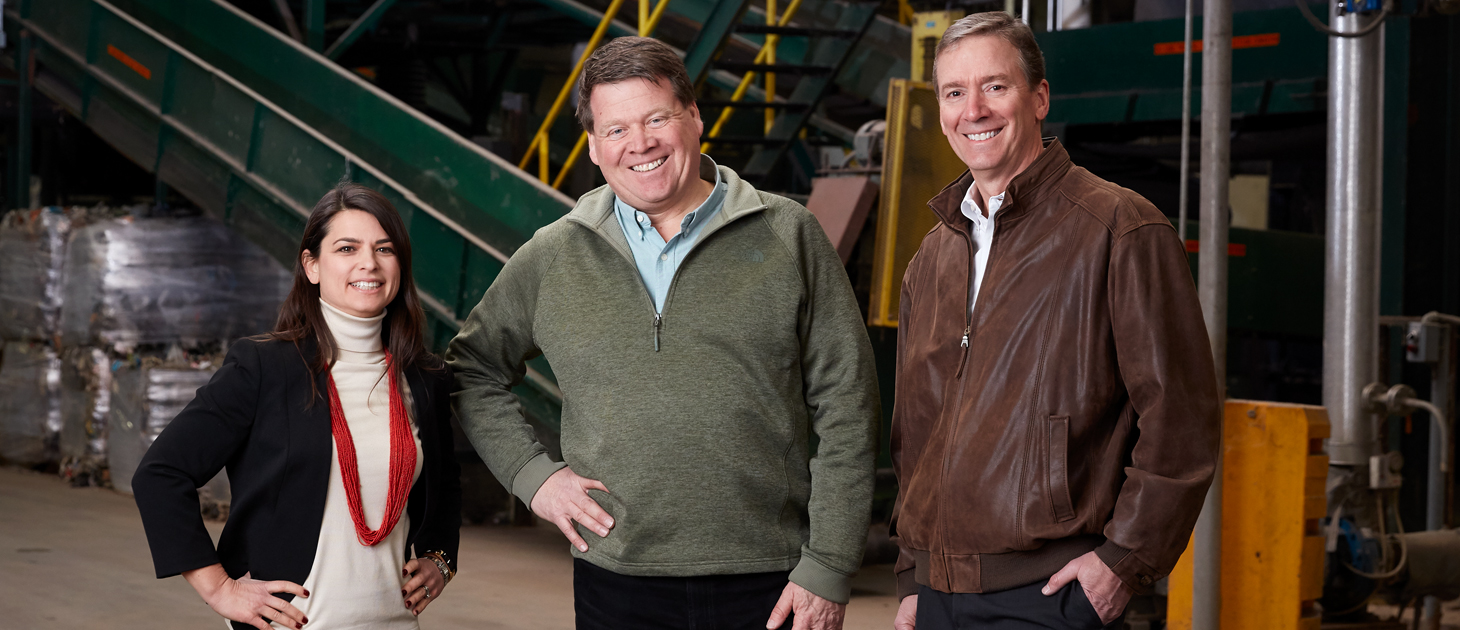
Trash nerd. That’s how Emily Landsburg identifies herself. Her colleagues agree the label fits, and so do her kids. “I have created a detour more than once on a family vacation to visit some sort of waste facility,” she says. “I get genuinely, passionately excited learning about new waste-to-value technology and projects.” In her role as director at Ultra Capital, she’s found ample opportunity to nerd out.
Landsburg vets investments that match her firm’s criteria for sustainable infrastructure. Unlike most private equity firms, Ultra focuses exclusively on projects. “Most people think of infrastructure as a bridge or an airport, but we look at specific types of projects that actively function like a standalone business,” she says.
That includes a public-private project that Landsburg helped identify: a 144,000-square-foot facility in Hampden, Maine, that aims to make waste disposal a lot less wasteful when it begins operating this year. “We take a recycling plant and put it on steroids,” says Craig Stuart-Paul, CEO of Fiberight LLC, the company that operates the facility.
ULTRA CAPITAL
Headquarters: San Francisco
Focus: Infrastructure-based projects related to the “commodities of life”: energy, agriculture, water and waste
Investment Range: Equity investments between $5 million and $50 million
Recent Project: Fiberight LLC, a high-tech recycling facility operator that will serve 87 municipalities in northern Maine
Consider the current state of U.S. garbage. About 33 percent of waste gets recycled, and the rest heads to landfills (55 percent) or incinerators (about 13 percent). Fiberight intends to flip those numbers. With the help of artificial intelligence, vision recognition and biotechnology, Stuart-Paul says the facility could achieve a recycle rate somewhere between 70 and 80 percent.
The project aligns with the sustainability catchphrase of “people, planet, profit.” In that triple bottom line, the last item is critical. When garbage isn’t buried or burned, facility operators avoid disposal costs and can transform the refuse into promising revenue streams. “I think impact investing is moving away from the early days when people thought of it as a fluffy, feel-good thing,” Landsburg says. “Oftentimes you’re getting above-market returns and lower risk. Now people are realizing this is a very shrewd investment strategy. Impact investing, first and foremost, is investing.”
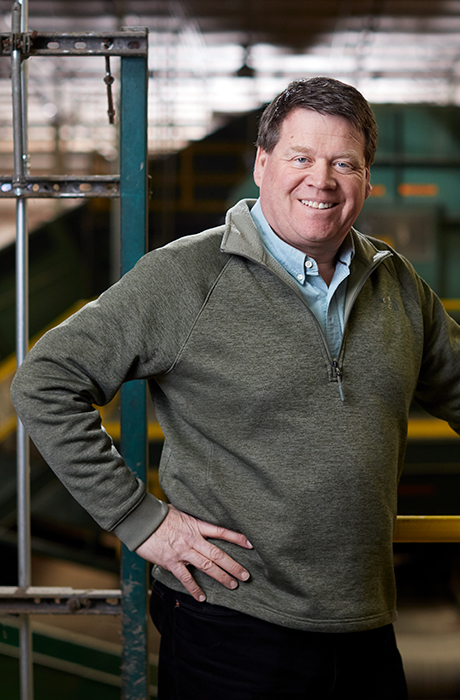
“We take a recycling plant and put it on steroids”
CRAIG STUART-PAUL
CEO, Fiberight
WASTE NOT
Fiberight’s waste processing requires plenty of sorting, but not by consumers. All of their trash—half-eaten tacos, water bottles, diapers, anything—can go in one bag. At the facility, that junk travels through two main phases. The front end of the plant has cutting-edge technology that includes video imaging and artificial intelligence, which allows mechanical systems to sort trash precisely.
“We don’t want people touching waste if we can avoid it,” says Stuart-Paul, who notes that most of the facility’s 42 full-time employees will fill technical positions like mechanics or forklift drivers. The plant’s high-tech system allows for more exact sorting of recyclables by group—separating colored plastic from clear, for instance—because higher-purity materials command steeper prices in the market.
At the plant’s back end, valuable materials are recovered from garbage that would otherwise get buried or burned. That, says Steve Davey, Fiberight’s COO, “is where the secret sauce of Fiberight resides.”
As sauces go, it’s not particularly appetizing. Once the plastic, metal and cardboard have been plucked from the trash, two things largely remain: food waste, and paper products deemed unfit for recycling, such as pizza boxes, tissues and diapers. The food waste runs through an anaerobic digester (where microorganisms break down the waste in an oxygen-free tank), creating methane that can be used to power the facility. The paper-based items are processed into pulp, which can be used for products made from lower-quality paper—like egg cartons, or paper trays that hold hot dogs at concession stands.
The municipal solid waste (aka trash) project has received $70 million in financing, which includes $45 million from a tax-exempt bond issuance, $23.5 million from Ultra and $1.5 million from Fiberight. In addition, Maine’s Municipal Review Committee contributed $5 million in the form of site improvements.
Advances in technology mean that big problems don’t always require big plans—local, smaller-scale infrastructure projects such as Fiberight’s can play a vital role in addressing those issues. Conventional project finance, however, has evolved to focus on billion-dollar projects, Landsburg says. That leaves Ultra’s target investment range an underserved market. The firm looks for investments with total project costs in the $5 million to $100 million range; its equity investment in those projects is between $5 million and $50 million. (Private equity giant Blackstone Group underscored the appeal of large-scale projects in 2017 when it announced plans to raise $40 billion for an infrastructure fund.)
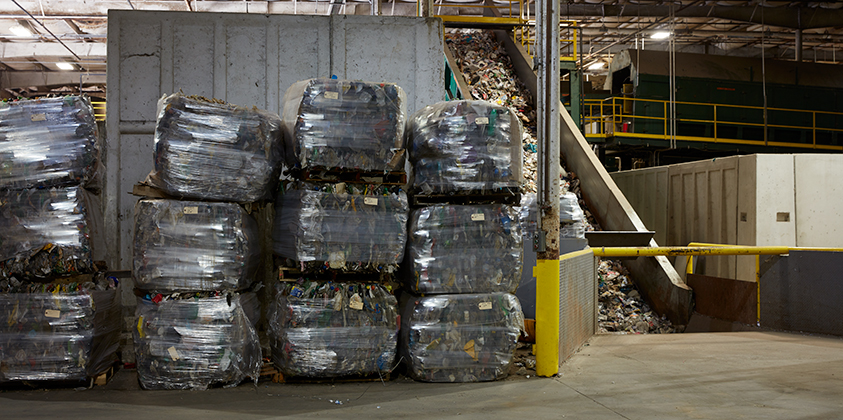
SCALING DOWN WITH TECHNOLOGY
“I see a large opportunity for private equity because what the waste industry needs is new technology,” says Stephen Simmons, senior vice president at Gershman, Brickner & Bratton Inc., a McLean, Virginia-based waste management consulting firm. Ultra hired Simmons to evaluate the potential revenue streams of the Fiberight facility.
“In almost every instance, new technology comes from entrepreneurs,” he says, adding that private equity funding helps get their innovations to market. “There’s a whole pent-up demand across the country and a whole mantra of zero waste. That means there needs to be new technologies and new markets developed.”
Fiberight’s process, although popular in Europe, is considered new in the United States, where anaerobic digestion isn’t typically used for municipal waste. “We’re essentially taking the best practices of European waste processing and applying it to the U.S.,” Stuart-Paul says. Fiberight already has a 46,000-square-foot facility in Virginia with similar technology that’s been tested for more than 10,000 hours, making the Maine project low risk, an essential criterion for Ultra.
Long-term predictable cash flow is an additional requirement for the firm’s investments, and Ultra checked that box for the Fiberight project.
“Trash will continue to be produced, and it has to go somewhere,” Landsburg says. More specifically, the project has long-term contracts with credit-worthy counterparties, including a 15-year contract with 87 municipalities in northern Maine. The project is guaranteed to receive approximately 102,000 tons of trash as part of a put-or-pay contract. “If we don’t receive it, they have to pay us for it anyway,” Stuart-Paul says.
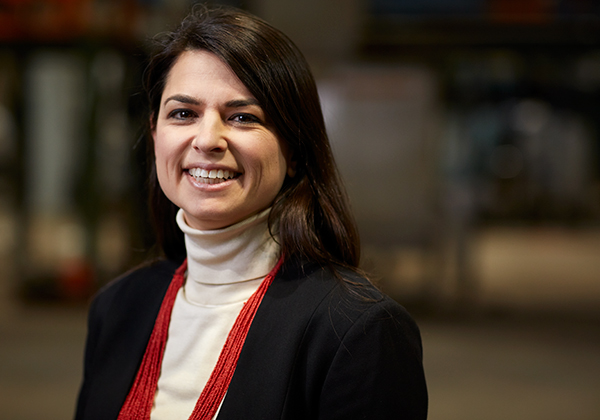
“Now people are realizing this is a very shrewd investment strategy. Impact investing, first and foremost, is investing.”
EMILY LANDSBURG
Director, Ultra Capital
The facility also will receive about 50,000 tons of commercial waste, such as restaurant garbage. “We do expect a few lobster shells,” he says. Additional revenue will come from selling recyclable materials and low-grade paper pulp. All told, Stuart-Paul expects the project to generate about $8 million to $10 million in EBITDA in 2019.
Ian Copeland, CIO and managing director with Ultra, says the firm seeks a 15 percent net return, plus or minus 2 percent. “With impact investing, a lot of people have this misconception that you’re sacrificing return. We firmly believe that, in fact, you’re generally increasing returns and increasing resiliency of the investment,” he says. “And there’s speed of deployment, which makes these smaller projects more cost-effective and therefore more attractive as an investment.”
Other investors seem to agree, based on the response to the tax-exempt bond issued by the state’s finance authority. Investment bank Jefferies served as sole underwriter on the transaction.
“Despite large supply in the week we priced, we saw significant demand,” says Kevin Coleman, vice president, project finance, at Jefferies and lead banker on the transaction. “We received orders from 17 high-yield municipal investors and had strong oversubscription on the offering.”
‘HIGH-TOUCH’ PROJECTS
But funding and technology won’t guarantee success for infrastructure projects. “Project development is high touch,” Landsburg says. “We all know stories of projects that never see the light of day, or falter after they’re built, because they didn’t properly obtain community support.”
Fiberight worked hard to avoid that potential pitfall. The project was replacing an incinerator (Maine’s landfills are full), and the owner of that facility would lose millions in revenue when it shut down, Stuart-Paul says, adding that the owner used paid advertising in an attempt to turn public opinion against the project. “There was a lot of mudslinging. They were taking out full-page ads, TV ads, radio ads; it was a total dogfight.”
Fiberight decided on a grass-roots response. The company’s leadership attended more than 100 town hall meetings to explain Fiberight’s facility. Stuart-Paul says he went to at least 40. “I stood before the residents and said, ‘I’m the guy who’s gonna take your trash, and I’m the guy who’s gonna make sure it’ll work for you,’” he recalls. “In Maine, that goes a long way.”
But what really surprised him was how much the residents cared. “The unique moment for me was the level of debate in a town meeting in rural Maine at 6 o’clock at night with nine people there,” he says. “You think it’s just trash, but they all got involved in it and they all realized how important it was. They said, ‘No, this is a new way to do stuff. We’re hearing from you guys over there that it’s risky, but if you don’t take some risks on some things, how does this country ever move forward?’ I heard that statement.”
One of those town hall meetings took place in Brewer, Maine. “We had some initial concerns about adopting a technology for processing waste that was not in use at this scale in the United States, but the thorough work done by the Municipal Review Committee’s technical consultants allowed us to be confident about its ability to succeed here in this region,” says Karen Fussell, finance director for the City of Brewer. “We are excited to be part of a project that we hope will become a model for other communities in the Northeast and across the country.” Fussell says she was pleasantly surprised by how much interest the initiative received from private equity. “To me, it represented another vote of confidence in the project,” she says.
“We’re not trying to build a firm that’s only swinging for home runs. We firmly believe that a strong, diversified portfolio of well-contracted, well-structured projects has a better chance of providing a predictable return.”
IAN COPELAND
CIO & Managing Director, Ultra Capital
A DIFFERENT MODEL
At press time, Ultra planned to close its first fund by the end of May, aiming for $150 million. It plans to market its second fund by the end of 2018, with a goal of raising around $250 million to $300 million. “We’ve got tremendous appetite for the second vehicle already,” Copeland says.
Like his trash-nerd colleague Landsburg, Copeland does more than examine a project’s numbers. He studies infrastructure up close, as his wardrobe suggests (he owns at least two pairs of composite-toe work boots). “My children get really, really frustrated with me when I’m driving … and I pull over and look at a construction site or a power plant or a waste treatment facility,” he says.
That’s probably not a typical side trip for most private equity executives. Then again, Ultra is not a typical firm. Usually, private equity firms will buy a company and continue to invest or reinvest in that business, Copeland says. “We’re buying a project that, after it hits the commercial operations date, has significant amounts of free cash flow,” he says. “So we see stabilized cash flow after about the second year of the vehicle, and typically, given the returns that we’ve got, our investors’ capital is fully returned within about year five. We’re not reliant on a market exit or a trade sale or something like that. We’re actually producing our return from predictable cash flows and at project levels producing a real commodity or a real service.”
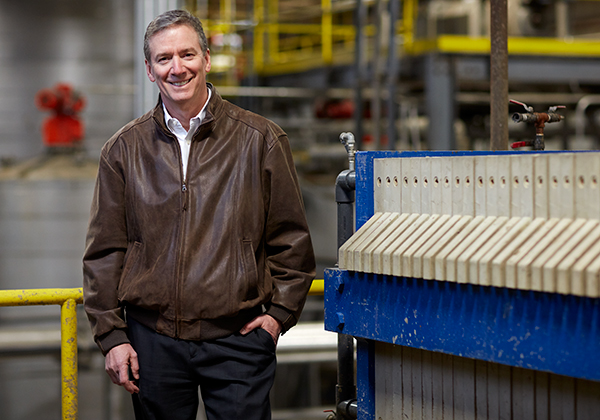
He points to another example of how Ultra deviates from the investment norm. “A typical private equity firm … is essentially screening out things that are good but maybe aren’t home runs,” he says. “We’re not trying to build a firm that’s only swinging for home runs. We firmly believe that a strong, diversified portfolio of well-contracted, well-structured projects has a better chance of providing a predictable return.”
A typical investor might look at 100-plus deals a year and maybe do five, he says. “Our goal is to look at 100 and if 50 of them meet our criteria, to do 50.”
Whether energy, agriculture, water or waste—the “commodities of life” that Ultra targets for investment—the firm wants projects with solutions to widespread problems.
Investment won’t happen without the potential for a long-term relationship with a developer that can build additional similar infrastructure projects. “We’re not interested in doing one-off projects,” Landsburg says.
Fiberight certainly meets that requirement. The company has already had discussions with officials in California, New England and worldwide. “I get two calls a day from India,” Stuart-Paul says. “But we want to walk before we run. This is a flagship project for us, and we want to be sure it works well. We’re very proud of it, and from that we will grow further.” Fiberight would eventually like to add even more value to the organic material at its Maine plant by breaking down the pulp further, creating biochemicals or biofuels such as ethanol through a process called hydrolysis. The plant’s operators hope to add that capability within the next two years, provided they receive additional capital.
For investors focused on sustainable projects, returning capital to stakeholders is important, but it’s only part of their motivation, Landsburg says. “There’s an underlying drive for them—or ambition for them—that adds to their dedication and commitment and focus. There’s a mission component.”
This story originally appeared in the May/June 2018 print edition of Middle Market Growth magazine. Read the full issue in the archive.
S.A. Swanson is a business writer based in the Chicago area who frequently covers technology.


